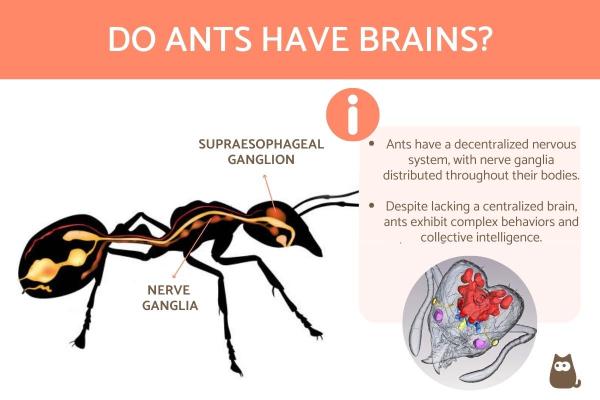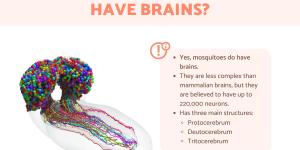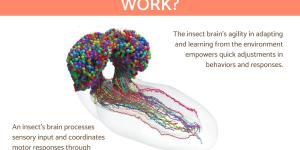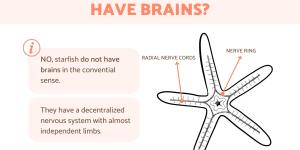Do Ants Have Brains Like Us?


Contrary to the conventional image of a centralized brain, ants possess a unique neurological arrangement that empowers them to perform complex tasks and coordinate seamlessly within their colonies. Their decentralized nervous system, sophisticated communication, and collective decision-making processes challenge our traditional understanding of intelligence, showcasing the diverse and fascinating ways in which nature has shaped cognition across the animal kingdom.
In the following AnimalWised article, we will discuss if ants have brains as well as the fascinating intricacies of their neurological structure, intelligence, and memory capabilities.
Do ants have brains?
Step away from the conventional image of a brain, as ants possess a remarkably different neurological setup. Unlike vertebrate animals, ants lack a central brain, instead relying on a decentralized nervous system with nerve clusters distributed throughout their bodies. This unique arrangement empowers them to perform complex tasks and coordinate seamlessly within their colonies.
Despite the absence of a centralized brain, ants demonstrate an impressive range of behaviors, including foraging for food, constructing intricate nests, defending their colonies, and communicating with one another using various signals. This apparent intelligence arises from the intricate organization of their nervous systems and their ability to utilize chemical, tactile, and auditory signals.
The supraesophageal ganglion, a prominent structure in an ant's nervous system, serves as a processing hub for coordinating colony activities. While simpler than vertebrate brains, it plays a crucial role in their collective functioning.
Furthermore, ants use pheromones, chemical signals that convey information, shaping colony structure and facilitating group-level decision-making. These signals contribute to their collective intelligence, enabling them to function as a cohesive unit.
In essence, ants, despite lacking a centralized brain, exhibit remarkable intelligence through their decentralized nervous system, sophisticated communication, and collective decision-making.
Discover the intricate stages of ant development and gain insights into the fascinating life cycle of these tiny creatures.
What is the brain structure of ant?
The ant brain, also known as the supraesophageal ganglion, is situated in the upper part of the esophagus. Its size can vary across different ant species, occupying anywhere from 8% to 60% of the total volume of the ant's head.
The ant brain is divided into three main parts:
- Protocerebrum: this section of the supraesophageal ganglion primarily handles visual processing and coordinates tasks related to the ant's head, such as perceiving light and orientation.
- Deutocerebrum: the deutocerebrum is responsible for processing information related to the ant's antennae and chemoreception. Here, ants interpret chemical and tactile signals from their environment and fellow ants, enabling them to communicate and navigate.
- Tritocerebrum: the tritocerebrum is associated with motor and coordination functions in ants, including locomotion and making decisions related to colony activities.
While these brain regions may appear relatively simple compared to vertebrate brains, the supraesophageal ganglion of ants is crucial for their functioning and behavior.
Moreover, a significant portion of information processing and decision-making occurs in smaller nerve ganglia distributed throughout the ant's body. These smaller ganglia are responsible for specific functions and enable ants to carry out specialized and coordinated tasks within the context of their colonies.
Read this other article to delve into the fascinating world of ant ecology and discover the role these tiny undertakers play in maintaining a healthy ecosystem.
How does the brain of ants work?
The ant brain, or supraesophageal ganglion, collaborates with other distributed nervous ganglia throughout the insect's body to process sensory data and coordinate its actions. While simpler than the brains of vertebrates, the supraesophageal ganglion plays a pivotal role in ant behavior. Here's how the ant brain operates:
- Receiving sensory information: ants collect environmental data through sensory organs, such as antennae, which detect chemical, tactile, and auditory stimuli. This information is gathered and conveyed to the supraesophageal ganglion.
- Information processing: upon reaching the supraesophageal ganglion, sensory data undergoes processing and integration. The brain coordinates these signals and makes decisions regarding responses to stimuli, whether it's foraging, colony defense, or communication with other ants.
- Communication and coordination: the supraesophageal ganglion also plays a role in coordinating activities within the colony. Ants communicate with one another using chemical signals (pheromones), tactile cues, and auditory signals. The brain processes these signals and regulates ant behavior, allowing for efficient division of labor in the colony.
- Decision-making: ant brains are actively involved in making decisions that impact the colony's life. For instance, when an ant discovers a food source, its brain processes the information and coordinates the colony's response, optimizing the exploitation of that resource.
- Coordination of locomotion: the supraesophageal ganglion controls the movements and locomotion of ants, enabling them to search for food, construct and maintain the nest, and defend the colony.
This intricate system allows ants to function collectively, communicate effectively, and efficiently manage a wide range of tasks within their colonies.
Embark on an entomological adventure and discover the captivating diversity of ant species, exploring their unique characteristics and identifying features in this comprehensive guide.
Do ants have memory?
Ant memory is a captivating phenomenon, distinct from vertebrate memory, tailored to the unique demands of social insects.
Firstly, ants possess a short-term memory that enables them to retain recent information, like the location of a food source. This facilitates communication within the colony, allowing them to precisely convey food locations and mobilize worker ants for retrieval. While ants can form long-term memories, they are not as enduring or intricate as those of vertebrates, typically lasting for hours or days.
Intriguingly, ants rely on chemical signals, particularly pheromones, for communication and to mark paths to food sources. This methodology aids in memory recall for food locations and trail-following, with the chemical signal strengthening as more ants traverse the route. This collaborative effort creates a collective memory of food source locations.
Ants exhibit an impressive ability to remember spatial patterns and routes. They navigate between their nest and food sources by utilizing visual, olfactory, and tactile cues, ensuring accurate navigation in their surroundings.
Furthermore, ants can learn from the experiences of fellow colony members. Observing another ant's food collection or obstacle overcoming equips them with knowledge applicable to similar situations.
While ant memory may not match the duration and complexity of vertebrate memory, its specialization in meeting the colony's needs is truly remarkable. This specialized memory and chemical communication system are pivotal for coordinating activities and thriving in their environment.
Embrace your inner ant enthusiast and delve into our collection of fun facts that will leave you with a newfound appreciation for these tiny marvels of nature in this other article.
If you want to read similar articles to Do Ants Have Brains Like Us?, we recommend you visit our Facts about the animal kingdom category.
- Cole, B.J. (1985). Size and behavior in ants: constraints on complexity . Proceedings of the National Academy of Sciences, 82(24), 8548-8551.
- Jaffe, K., & Perez, E. (1989). Comparative study of brain morphology in ants . Brain, behavior and evolution, 33(1), 25-33.
- López-Riquelme, G.O., & Ramón, F. (2010). The brave new world of ants . Tip Specialized Magazine in Chemical-Biological Sciences, 13(1), 35-48.





